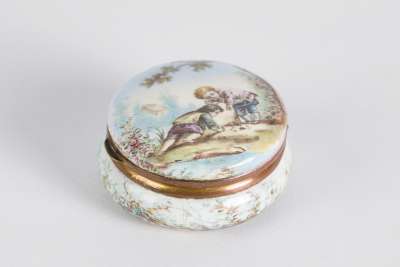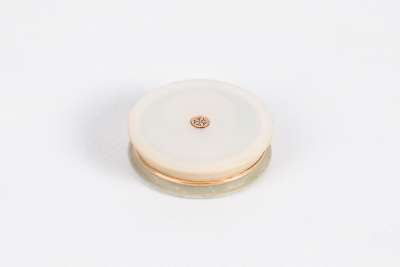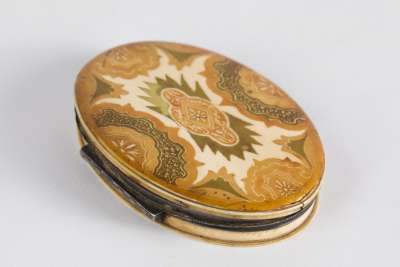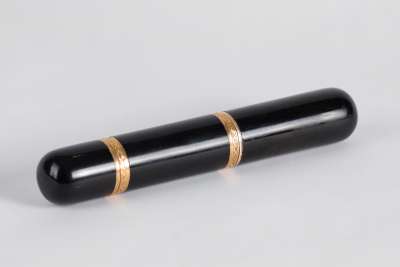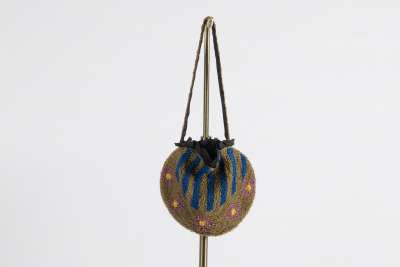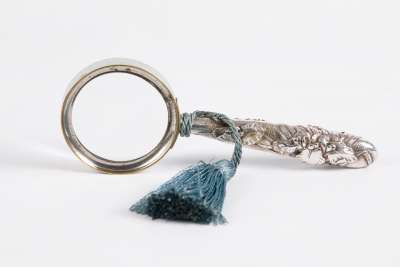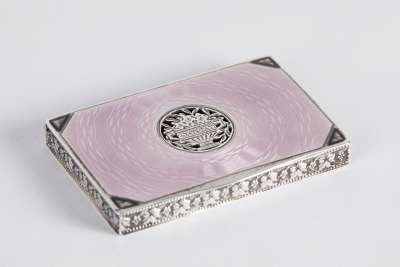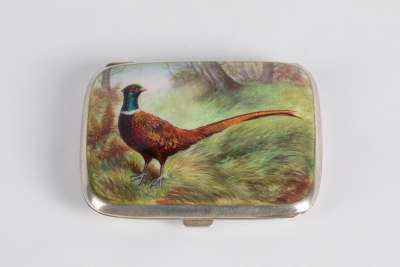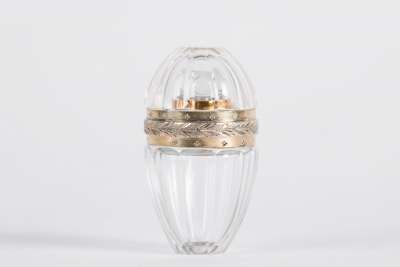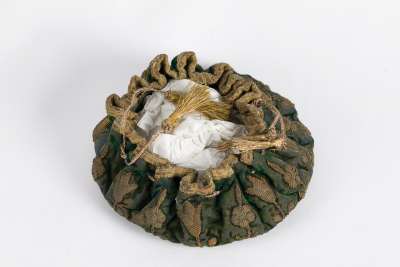This Shibayama Butterfly Ornament, constructed in Japan during the Meiji period around 1900, illustrates a notable example of traditional Japanese craftsmanship. The ornament features exquisite Shibayama inlay, characterised by wings fashioned from ivory intricately adorned with mother-of-pearl insets and detailed black inlaid feelers. Enamel accents in red, green, and black enhance its visual appeal, while the central body, connected by a gilt metal hinge, enables the wings to move with a fluid grace. Such design elements not only highlight the artistry prevalent in the Meiji era but also reflect the natural beauty that inspired Japanese artisans of the time.
Condition Report
The ornament is preserved in good condition, with the brass hinge mechanism showing minor wear, typical for its age. The inlay work remains intact, and the mother-of-pearl showcases its original lustre. The ivory wings present an age-related patina, a common characteristic of pieces from this historical era. Slight blemishes can be identified on the left wing, reflecting its age, yet it bears no visible signs of restoration. The clasp mechanism is functional and secure, indicating careful preservation practices.
Dimensions
Weight: 5.030g, Width: 5cm, Height: 2.5cm.
A Personal Accessory of Elegance
This ornament features a brass clasp mechanism on the reverse side, suggesting its utilisation as a personal accessory during the Meiji period. It may have served as a brooch or a garment embellishment, both of which were popular during this time. Additionally, the structural design and functional hinge allow it to act as a decorative hair ornament or attachable clasp for ceremonial items, showcasing its versatile application in daily life.
Fine Example of Shibayama Style
This ornament serves as a prime illustration of Shibayama artistry, which rose to prominence in the late Edo period. Initiated by Ōnoki Senzō, the Shibayama technique involves the high-relief inlay of materials such as mother-of-pearl, coral, and ivory onto a bone or ivory base. Renowned for producing intricate, three-dimensional designs, the style typically portrays natural motifs, including flora and fauna. During the Meiji period, Shibayama pieces gained international recognition, especially after exhibitions showcased them globally.
The Art of Inlay and Ivory
The process of crafting this butterfly ornament necessitated meticulous craftsmanship. The Shibayama inlay technique involves precise placement of mother-of-pearl and enamel on an ivory substrate, creating a multi-layered texture. The integration of gilt metal for the hinge accentuates the contrast between robust materials and delicate artistry. Such objects were characteristically handcrafted, reflecting the skills and dedication of Meiji-era artisans.
Crafted by Renowned Artisans of Yokohama
While the specific maker of this ornament remains unidentified, it embodies the craftsmanship typical of artisans operating in Yokohama during the Meiji period. This city emerged as a centre for the production and export of decorative arts following Japan's integration into global trade networks. Artisans from this region demonstrated the ability to merge traditional Japanese techniques with designs appealing to Western aesthetics, greatly enhancing the global reception of such ornaments.
Collected by Enthusiasts of Japanese Art
Shibayama pieces, including this butterfly ornament, garnered substantial interest among collectors during the Meiji period, particularly following their introduction at key events like the 1867 Paris Exposition. Collectors valued these items for their detailed workmanship and harmonious material combinations. The period of modernisation and increased cultural exchange was crucial, as the Japanese government actively promoted art exports. As a result, these artifacts continue to hold value for collectors who esteem their historical significance and artistic merit.


